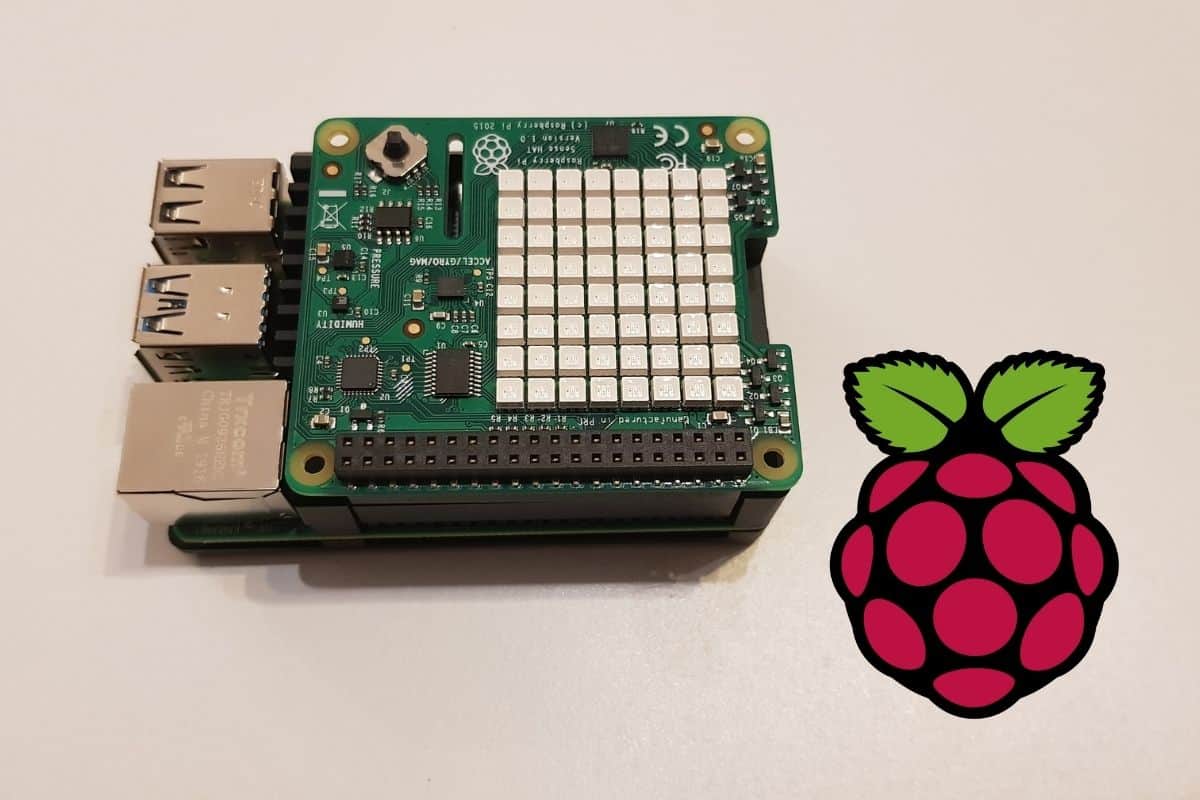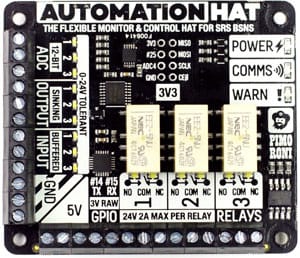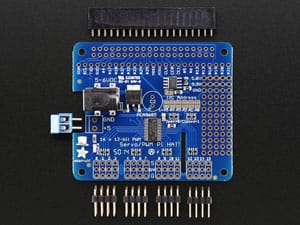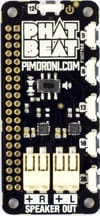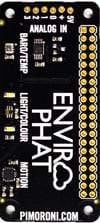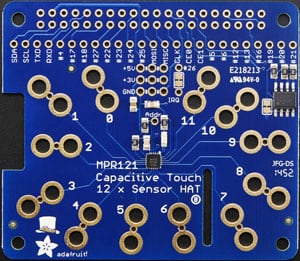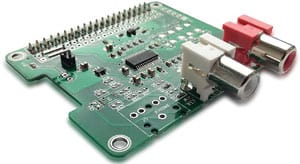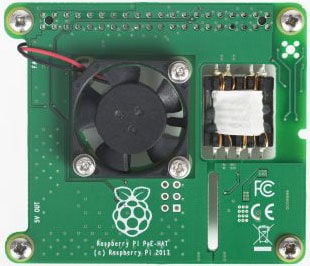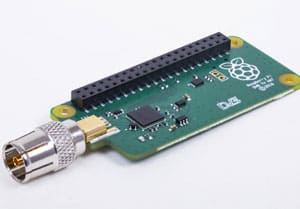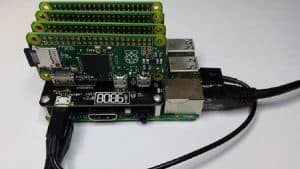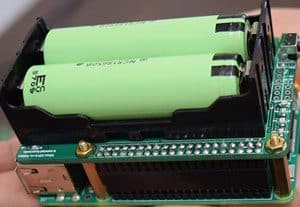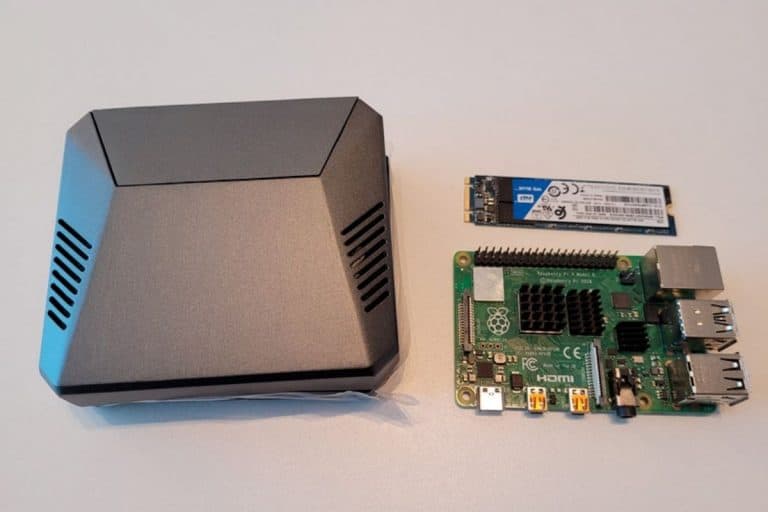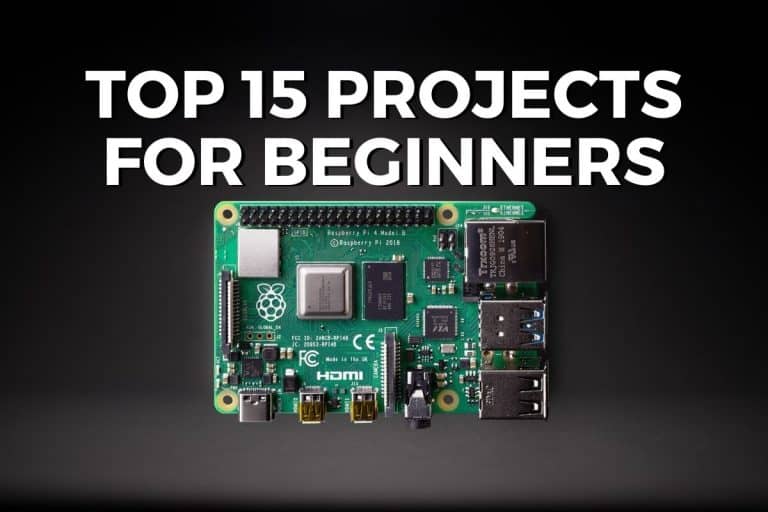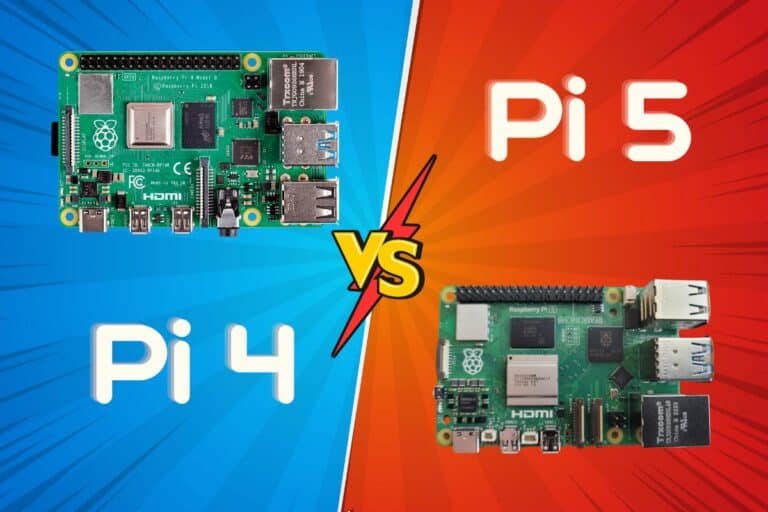Top 13 Raspberry Pi HATs you need to try in 2024
One of the best features of the Raspberry Pi is that you can add extensions to enhance its capabilities.
When you buy a Raspberry Pi, you only get the minimum required to make it work.
And then you can add additional cards to do what you want with it.
What are the best Raspberry Pi HATs?
| Best for | Model |
|---|---|
| Features | Raspberry Pi Sense HAT |
| Price | Adafruit Servo |
| Kids | Adafruit Capacitive Touch |
| Beginners | TV HAT |
| Experts | SunFounder PiCar-X (Robot Hat) |
There are hundreds of extensions you can find for your Raspberry Pi: sensors, automation, sound cards, screens, …
My job today is to give you a list of the best Raspberry Pi HATs on the market, to give you a good idea of what is possible.
So in this article, you’ll get the 13 best extensions you can offer to your Raspberry Pi.
At the end of the reading, you should have tons of projects ideas to build with these Raspberry Pi HATs.
What’s a “HAT”?
We often use the term HAT to define a Raspberry Pi extension.
It’s not only for the first meaning, but it stands for “Hardware Attached on Top”.
In short, it’s an additional card, that you plug into your Raspberry Pi to bring new features.
Generally, it uses the GPIO ports to connect the two cards together.
Don’t panic, the assembly is easy.
It requires no soldering, so you can plug and unplug it when you want
And even better, the installation is most of the time automatic.
The Raspberry Pi will recognize the HAT thanks to an EEPROM module on the board that identifies the HAT model.
So, don’t be afraid to use HAT with your Raspberry Pi, it’s straightforward, and close to an additional PCI cards on your computer.
Just plug it, maybe install one thing, and it’s ready to use.
You don’t need to be an experimented handyman to play with these toys 🙂
Best Raspberry Pi HATs
It’s time to browse into my selection of the best HATs for Raspberry Pi.
There is no specific order, all of them are good and for different purposes, so it’s not possible to make a ranking.
Sense Hat
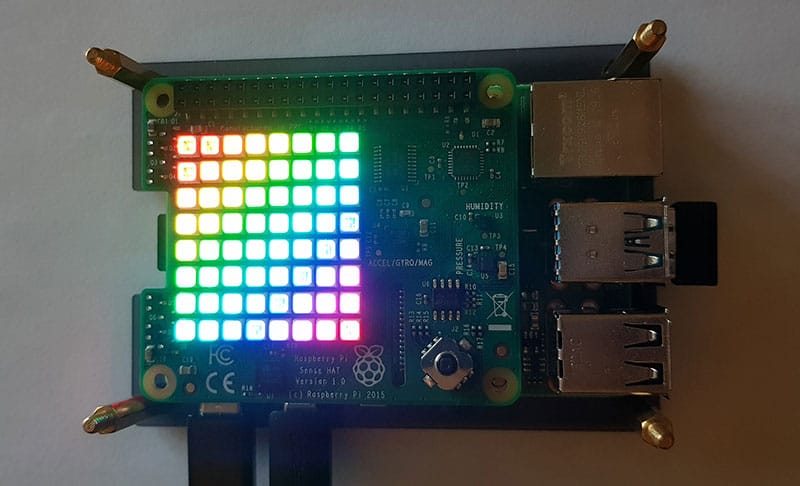
The Sense HAT is the one you absolutely need to try.
It’s a bestseller, with many reviews, tests and publications.
The sense HAT provides many new sensors to the Raspberry Pi:
- Accelerometer (get the movement speed of the PI).
- Gyroscope (capture the rotation movement of the Raspberry Pi).
- Magnetometer (magnetic field measurement).
- Air pressure sensor.
- Temperature and humidity sensors.
And there is also a LED display matrix and a joystick on it.
The Raspberry Pi Foundation created this HAT originally for the Astro Pi project, to send Raspberry Pi to space and measure everything we can.
But even on earth, it’s possible to make many projects with this extension (educational at least).
If you are lost in all these new words and abbreviations, request my free Raspberry Pi glossary here (PDF format)!
Download now
I strongly recommend this HAT, whatever your current level on Raspberry Pi. It allows you to use it for many projects and it’s really affordable (check the current price on Amazon).
Once you have it, you can follow my Sense Hat Tutorial here, and discover how you can use it.
Automation Hat
The Automation HAT from Pimoroni is also a must-have in this listing.
It’s a monitoring and automation board, you can plug to your Raspberry Pi to add many features.
With relays, analog channels, powered outputs and buffered inputs you can bring many extensions to your basic Raspberry Pi.
Here is a list of all features included:
- 3 x 24V @ 2A relays (NC and NO terminals).
- 3 x 12-bit ADC @ 0-24V (±2% accuracy).
- 3 x 24V tolerant buffered inputs.
- 3 x 24V tolerant sinking outputs.
- 15 x channel indicator LEDs.
- 1 x 12-bit ADC @ 0-3.3V.
- LED indicators for each port.
It’s available for all Raspberry Pi models, including the Pi Zero.
Check the price on Amazon if you want to try it.
Pimoroni Unicorn
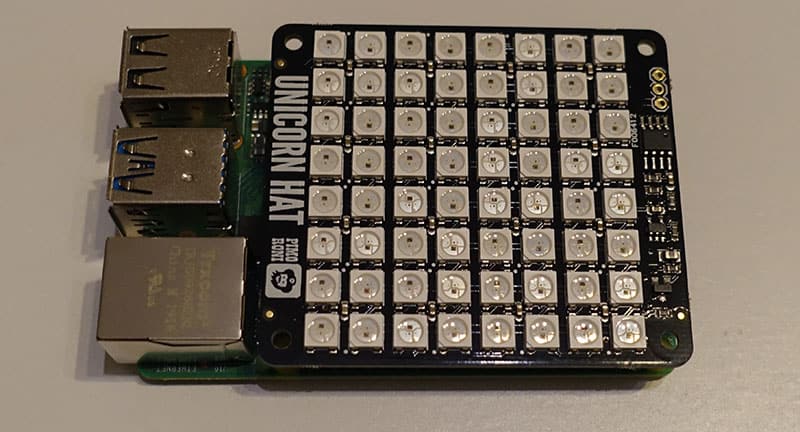
With a funny name, the Pimoroni Unicorn brings a 64 LED matrix display to decorate your Raspberry Pi.
It also comes with a Python library to code the light as you want.
Join Our Community!
Connect, learn, and grow with other Raspberry Pi enthusiasts. Support RaspberryTips and enjoy an ad-free reading experience. Get exclusive monthly video tutorials and many other benefits.
Learn moreOn the image, you can’ see it, but this 64 LED model will look like the Sense Hat once powered.
And there is also an HD model with 256 LED.
This HAT opens to you any kind of project, from a basic but fun light test, to an awakening dawn simulator.
You’ll enjoy this HAT and your kids too (more details on Amazon).
If you hesitate with the Sense Hat, you can check my review Sense Hat vs Unicorn here.
Adafruit Servo
The Adafruit Servo board allows you to connect up to 16 Servo motors to your Raspberry Pi.
I call this HAT the “Arduino adapter” because it makes the difference between a Raspberry Pi and an Arduino.
The main Arduino strength is to be good in a complex electronic circuit, to manage physical devices like buttons and motors.
But the Raspberry Pi is better being the brain, not the hand.
This extension allows the Raspberry Pi to take both roles.
If you are interested in this topic, check my post about the differences between Arduino and Raspberry Pi, where I underline which one to use in which case.
Meanwhile, if you want to build projects with motors in the future, I highly recommend trying this extension (it’s almost given on Amazon).
Once you have it, you can use any servo motor you already have for Arduino, or get this kind of pack on Amazon. You’ll love doing bigger projects on Raspberry Pi 🙂
pHat Beat
The pHat Beat from Pimoroni is the ultimate hat you need to have for sound projects.
It improves the sound quality of the Raspberry Pi and brings other new features like:
- Amplified sound.
- Digital output.
- Stereo audio.
- 16 RGB LEDs (ideal for a VU meter).
- 6 buttons to control your audio stream (play, pause, forward, …).
Once the software installed, you will be able to manage the audio settings directly through ALSA from your operating system.
They also provide the VU meter plugin to display it without coding anything
But you can program it with Python if you prefer.
The extension is no longer available on the Pimoroni website (and I didn’t find it on Amazon), so you’ll have to do a bit of research to get one currently :/.
Pimoroni Enviro pHat
This one is again a Pimoroni extension (they are active in the HAT market for Raspberry Pi and produce good hardware components).
The Enviro pHat is for the Raspberry Pi Zero and you need to solder it to the GPIO pins before using it, so maybe it’s not the first one to try in this list.
The Enviro extension add these sensors to your Raspberry Pi Zero:
If you are lost in all these new words and abbreviations, request my free Raspberry Pi glossary here (PDF format)!
Download now
- Accelerometer (movement speed) and magnetometer (magnetic field).
- Light and RGB color sensors.
- Temperature and pressure sensors.
It also comes with 2 lights and an analog-to-digital sensor.
Once installed, a Python library is available to build your projects easily.
This HAT is available on Pimoroni.
I recommend it for projects with a Raspberry Pi Zero, but if you are using another model, I think the Sense HAT (first on this list) will do a better job because you have additional sensors and don’t need to solder it.
Adafruit Capacitive Touch
I like this one because it’s funny.
The Adafruit Capacitive Touch HAT add 12 capacitive sensors to your Raspberry Pi projects.
And as I’ll never be able to explain to you what it is better than this video, I’ll show you:
The Adafruit Capacitive Touch HAT is available on Amazon (link here).
You’ll also need alligator clips to connect the objects to the extension board (check this set for example).
The only limit that this HAT can do for you is your creativity 🙂
I’m sure it should work perfectly with kids, and it’s a cheap and educational toy for once ^^ (check the price on Amazon).
HifiBerry DAC
I already told you about this extension board on this website.
The HifiBerry DAC+ adds two RCA connectors to your Raspberry Pi.
For audiophile and sound projects it may be useful to get connectors and sound quality on your Raspberry Pi.
DAC stands for “Digital-to-Analog Converter” and this one provides a 92kHz/24bit high-quality audio.
It’s directly used by the Raspberry Pi operating system and you can control the volume with the ALSA mixer.
You’ll find all the details on Amazon.
PoE Hat
The Raspberry Pi PoE HAT is a recent product created by the Raspberry Pi Foundation.
The goal is to power your device with your Ethernet cable.
PoE stands for “Power over Ethernet” and allows you to power devices like phones without additional power source.
With this HAT on your Raspberry Pi and a PoE switch (check this one on Amazon if you want to try), you can remove the power supply.
It’s awesome because you only need an Ethernet socket somewhere to put your Raspberry Pi on it.
There is no additional RJ45 port on this HAT, it’ll use the default one and collect the electricity from it to run your Raspberry Pi.
This HAT is available on Amazon (direct link here) or on the official Raspberry Pi website.
TV Hat
The TV Hat is a product from the Raspberry Pi Foundation.
It allows you to receive digital streams (DVB connector) and watch TV channels on your Raspberry Pi.
The installation on your Raspberry Pi is easy, you just need to install a new package on Raspberry Pi OS: tvheadend
It’s also possible to use it with Kodi or LibreELEC to improve your media center device.
The best price I have found is on Pi-Supply. The shipping is fast all over the world, and if you are lucky you’ll receive some candy in your delivery 🙂
Cluster Hat
If you know nothing about clustering, I have a post on how to build your first cluster and also another one on why you would need one.
You’ll learn anything you need on how to make a basic network cluster with two Raspberry Pi (any models).
But here we’re talking about a specific HAT to build cluster with 4 Raspberry Pi Zero.
This extension board goes on a Raspberry Pi (A or B) and allows you to plug up to four Raspberry Pi Zero on its back, to build a big cluster.
If you’re interested in this project, you can find the Cluster Hat on the website with the same name here.
Uptime UPS
We saw a lot of HATs that add a new feature to use it in code or with a specific software.
This one doesn’t, but it’s awesome.
This HAT adds battery slots to your Raspberry Pi to protect it from the power outage.
This ensures that you will not lose data and that your critical projects can run all day long without interruption.
It’s available on Amazon if you want to try, you don’t need to solder anything to use it.
Robot HAT
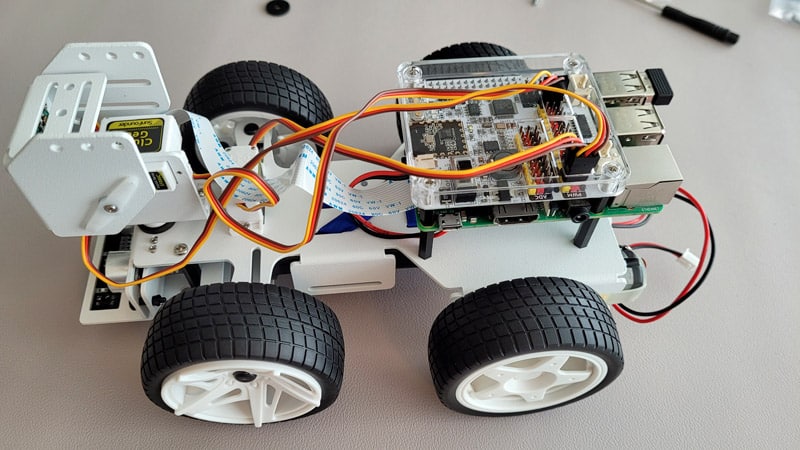
I kept the best one for the end 🙂
It’s not really a HAT but a complete kit including a HAT, so it’s ok to have it in this list 🙂
A robot kit provides you all the components to build a Robot Car easily.
There are several models available, but I really like this model from SunFounder. There is everything you need for a decent price.
This car includes a camera on the front and you can control it from your smartphone (via Bluetooth).
It’s really fun and you can go further!
The line tracking module and the other sensors allow you to create your smart car.
And obviously, you can add more modules later using this chassis.
If you are not decided to try this one, you can compare it to my full list of robot kits for Raspberry Pi here.
It's a free PDF guide containing every Raspberry Pi Linux command you should know!
Download now
Related questions
What’s the difference between HAT and pHAT? A HAT has the Raspberry Pi A/B size and respects some guidelines given by the Raspberry Pi Foundation (like the mandatory EEPROM module to install it easily). A pHAT is generally the equivalent for a Raspberry Pi Zero, with no specific rules from the Foundation.
How to use the HAT capacities in a Python script? I can’t give you the detailed information for any HAT of the market. But you’ll find in the product documentation how to do this. Generally, there is a specific library for you HAT. For example, for the Sense HAT, you need to install the sense-hat package with apt and then use the library in your script: from sense_hat import SenseHat
It's a free PDF guide containing every Raspberry Pi Linux command you should know!
Download now
Reminder: Remember that all the members of my community get access to this website without ads, exclusive courses and much more. You can become part of this community for as little as $5 per month & get all the benefits immediately.
Conclusion
That’s it, this is the end of my favorite HATs for Raspberry Pi.
There is a lot more available on the market, I can’t show all of them, but you have here the best ones.
I hope this article gives you some ideas for your future projects.
Let me know if you already have some of them, or if there are other good ones you want to share with us.

